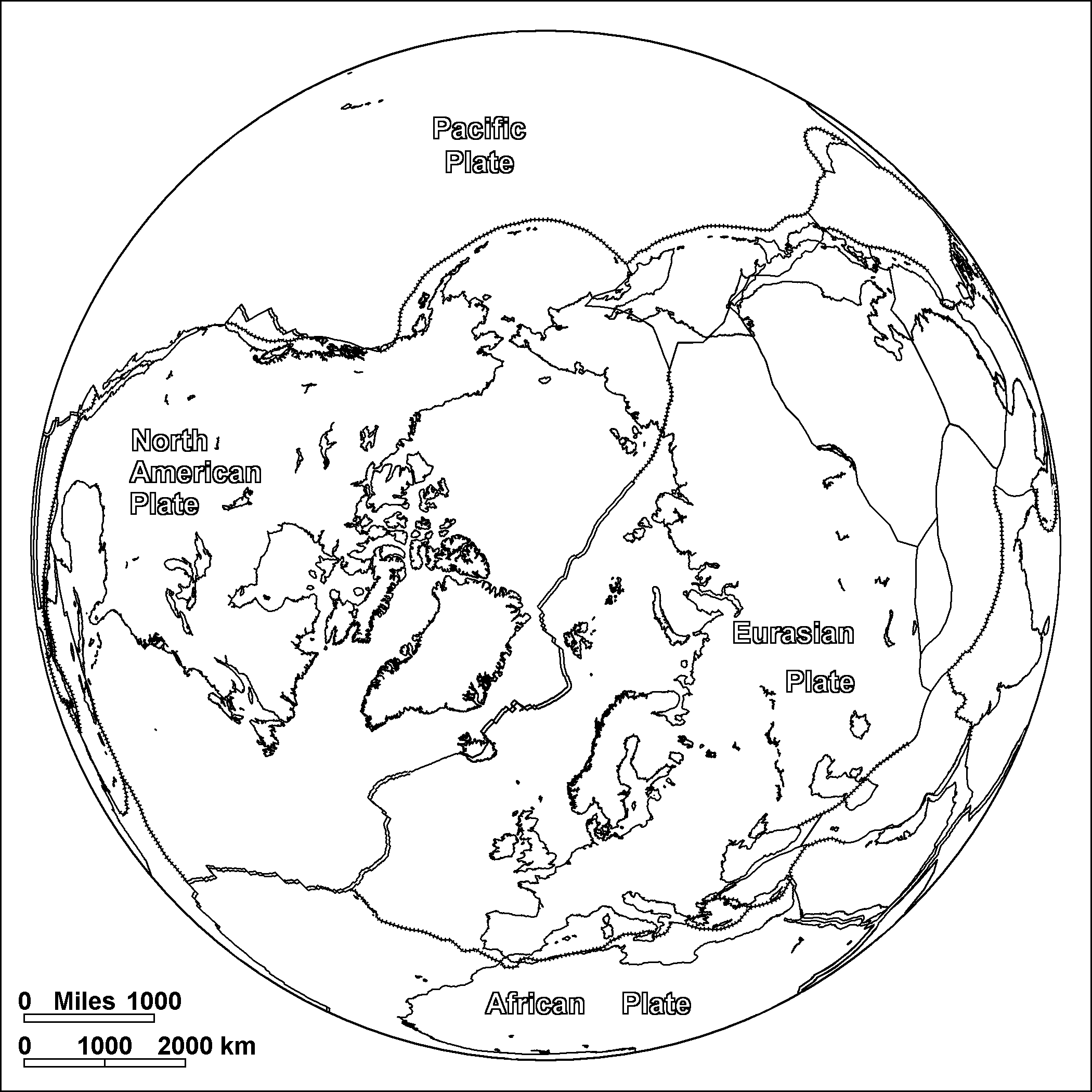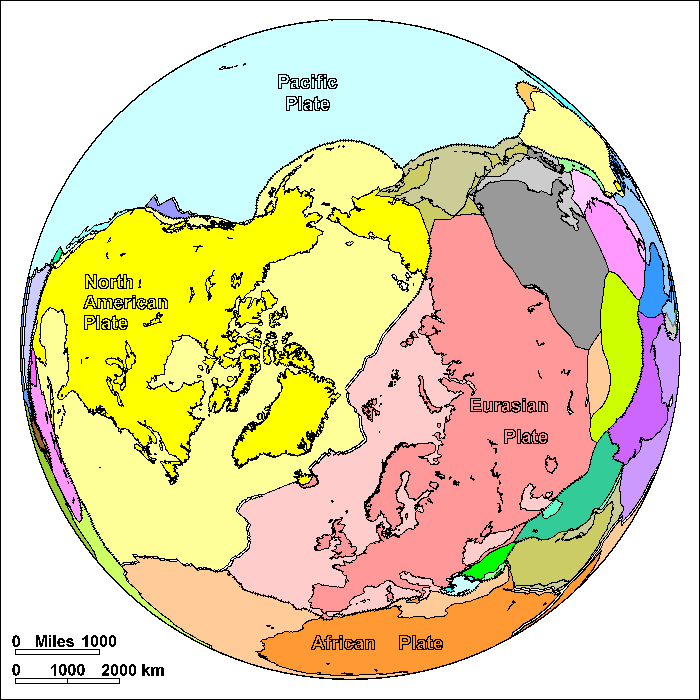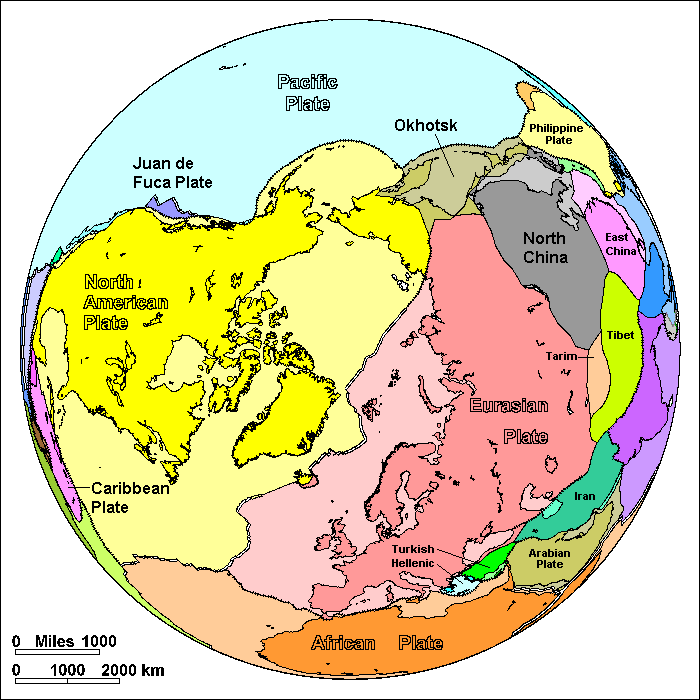Arctic Ocean Plates
Steven Dutch, Professor Emeritus, Natural and Applied Sciences, University of Wisconsin - Green Bay
On these diagrams, pairs of parallel lines show boundaries where plates are spreading apart, lines with ticks show boundaries where plates are colliding, and simple lines show other types of boundary. These include places where plates are simply sliding past one another, places where motions are too complex to portray simply, and places where new plate boundaries may be forming.
The Arctic Ocean is just the northern extension of the Atlantic. The most interesting thing here is the way the boundary between the North American and Eurasian Plates changes from divergence to convergence. The two plates are actually opening like a hinge and the pivot is in northeastern Siberia. On the far side of the pivot, the plates converge.
The earth has two kinds of crust. The continents are mostly made of thick granite. When continents pull apart, the gap is filled by thin crust made of basalt. In plate tectonics, a continent is any piece of continental crust surrounded by oceanic crust or plate boundaries. Greenland is a continent. When North America and Europe began to pull apart about 80 million years ago, Greenland originally moved as part of Europe for about 20 million years. Then the crust broke on the east side of Greenland, leaving it attached to the North American Plate.
Some pieces of continental crust can be very small. Sardinia and Corsica, in the Mediterranean, are examples. Such small pieces are called microcontinents.
Another small piece of crust that separated from Europe is completely submerged and runs across the Arctic Ocean from northernmost Canada to Russia. This strip of crust is called the Lomonosov Ridge. In 2001 Russia claimed that it was an extension of Russia's sea bed and in 2007 an expedition deposited a Russian flag on the ridge at the North Pole. Canada and Denmark (which administers Greenland) also are exploring the ridge with possible intentions of claiming portions of it.
Iceland is not continental crust at all. There is a long-lived source of magma called a hot spot beneath Iceland. Iceland is made up entirely of volcanic rocks and is really an exposed part of the Mid-Atlantic Ridge.

Possible Coloring

Labeled Features
In addition to the large plates, significant small plates are labeled. Very small plates are not labeled.

Return to Geology Coloring Book Index
Return to Professor Dutch's Home Page
Created 25 July 2009, Last Update 15 January 2020